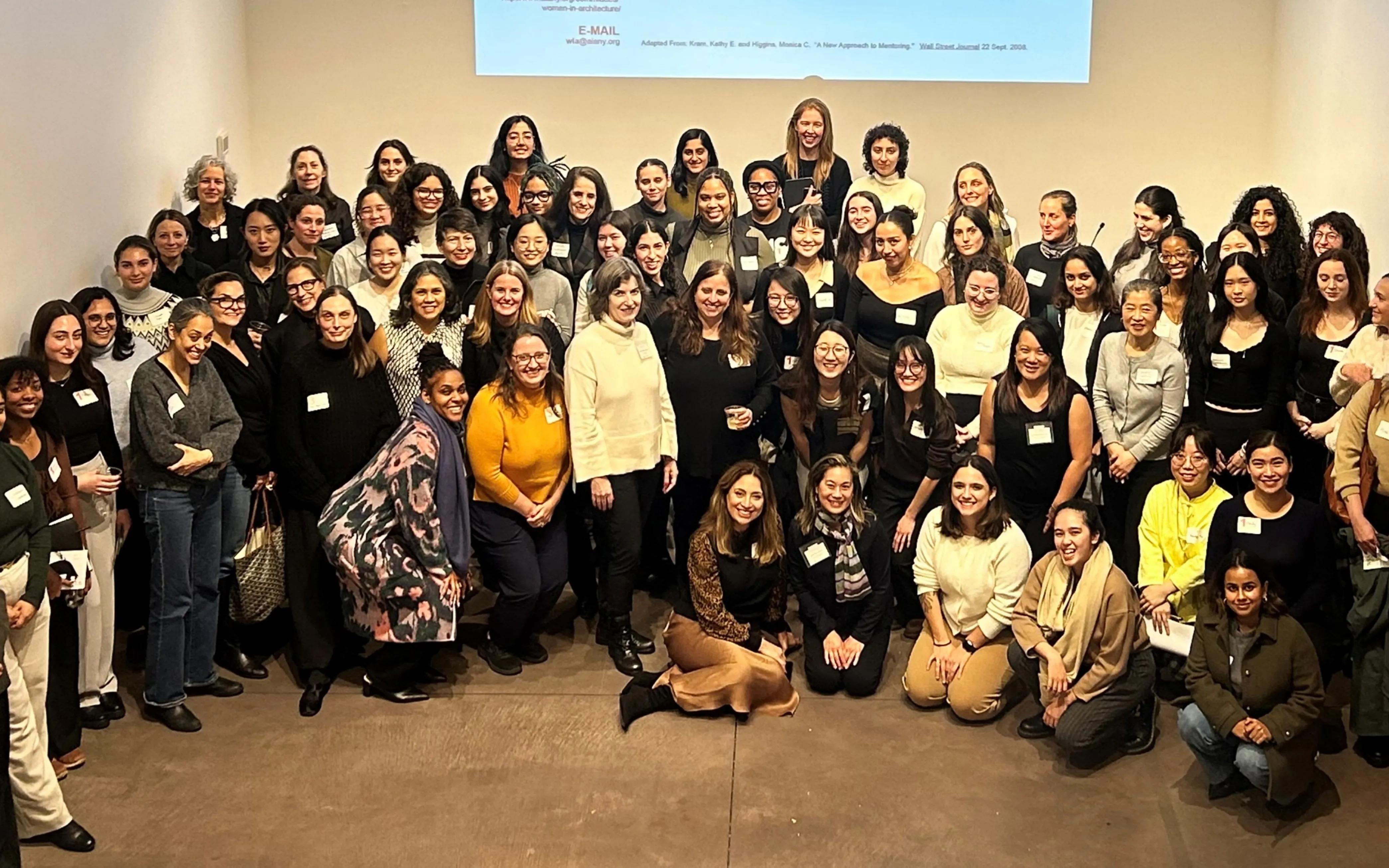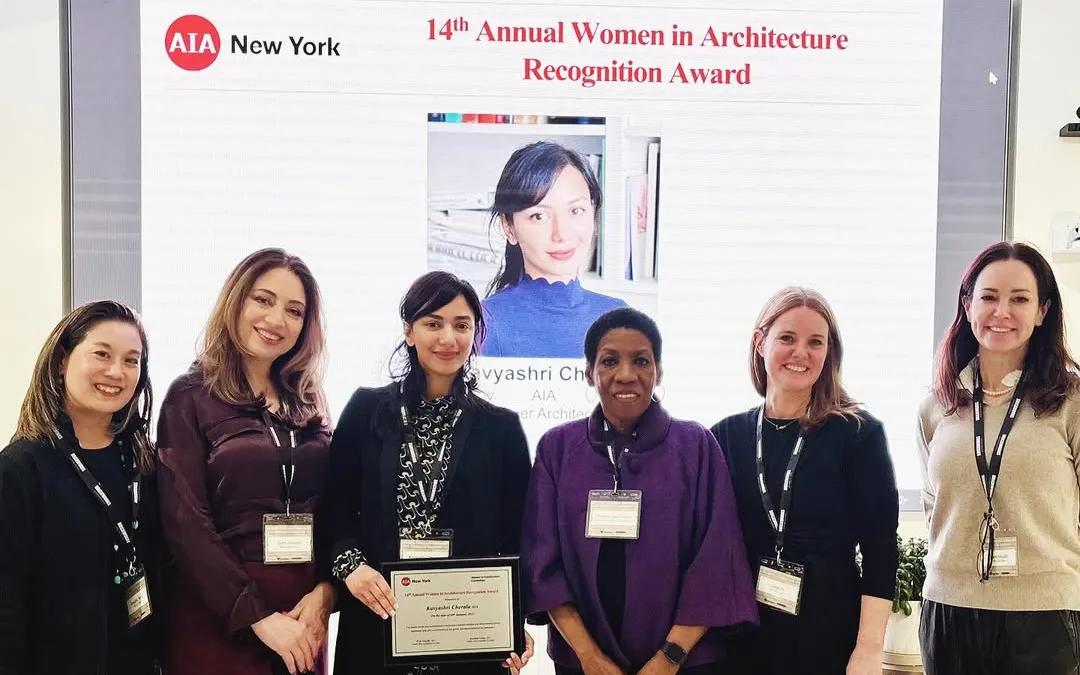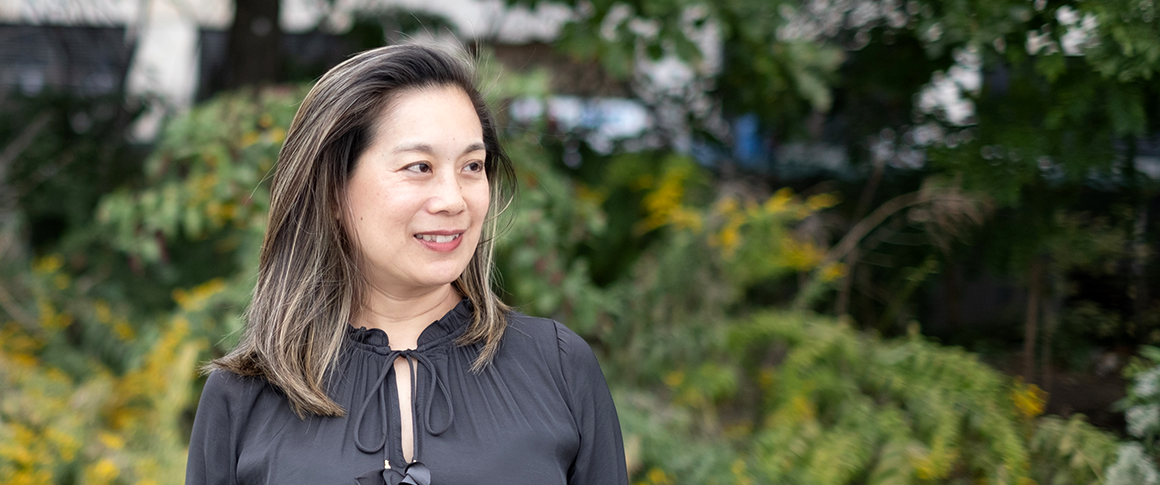We recently sat down for a conversation with architect Rosalind Tsang, former New York City studio director for BDP (Building Design Partnership). With over 20 years of experience in architecture, Rosalind shares how she overcame hurdles on her path to licensure and how she is now using her voice to advocate for greater inclusion and equity in the profession.
Identity and Architecture
I was born, raised, and educated in Canada, a child of Asian immigrants. Art was my favorite subject in school. I loved sketching, painting, and the act of creating.
In my senior year in high school, one of the weekly assignments in art class was to sketch a building, my first experience with architecture as a subject matter. I was captivated by a church because of its different textures: brick, glass, metal, and a steeple that appeared to disappear into the sky. My art teacher, who was a mentor to me, encouraged me to consider a career in architecture. I applied, got in, and the rest is history.
I have been fortunate to have held principal architect roles at globally recognized architecture firms in New York City. My interest is in innovative practice with sustainability and social value embedded into the design ethos. Having lived in both small towns and international cities, I am passionate about people and cultures, global dialogue, exchange of ideas and best practices, collaboration, and what brings people together.
Journey to Licensure
I remember coming to New York City from Canada in the early 2000s for a fun weekend to visit friends. I had set up some informational interviews and was curious about living and working in the Big Apple. Unexpectedly, I received a job offer by the end of the weekend. I moved to New York City, and one of the first things I did was look into getting licensed.
I learned that my school (University of Waterloo, Canada) was not National Architectural Accrediting Board (NAAB)-accredited at the time, which was required to start the licensure process in New York. So, I had to complete extensive paperwork to obtain my authorization to test (ATT). This process affected my motivation and energy.
Over the next ten years, I explored NYC’s neighborhoods, culinary and cultural offerings, and traveled the world. But as my responsibilities with projects and clients grew, I recognized the importance of getting licensed for professional advancement, development, and credibility. Therefore, I dedicated myself to the task. Balancing work, study, and personal interests while maintaining my mental health, I completed the exams in two years. This pace allowed me to avoid burnout yet maintain continuity in the exam process.

Advancing Gender Equity
Women face increasing gender inequity as they progress in their careers. In the United States, women represent 50% of architecture students and 46% of Architect Registration Examination® (ARE®) test takers, yet comprise only 26% of licensed American Institute of Architect (AIA) members and 27% of all architects, 17% of AIA member principals and partners, and less than 5% of the profession's highest honors: the AIA Gold Medal and Pritzker prize. This underrepresentation is due to various systemic, personal, social, and cultural factors. Building female talent and leadership is essential.
Experiencing bias and microaggressions throughout my career has fueled my passion to advocate for greater diversity, equity, and inclusion within the architecture and design community. Many women, including me, realize that working hard alone is not always sufficient for advancement, especially from mid-career onwards.
After obtaining licensure in 2015, I began attending AIANY Women in Architecture (WIA) Committee meetings. I was invited to the advisory board and then was named the co-chair in 2021. WIA’s mission is to promote women leaders in architecture and allied industries through networking, mentorship, and professional development. One of our signature programs is WIA’s Annual Recognition Award, where we honor one recently licensed woman architect who demonstrates leadership and a commitment to the advancement of our profession with a $1,000 stipend toward the AIA National Conference. This incredible community continues to inspire me, and I am enthusiastic about contributing to developing pathways for women in leadership.

Advice for Emerging Professionals
While technical and design skills have been essential throughout my career progression, I have come to understand that business acumen, emotional intelligence, and marketing capabilities are vital for enduring success as an architect. These competencies are often overlooked or underemphasized in one's career development, so I recommend speaking to mentors, seeking out opportunities or professional organizations to help you grow in these areas.
Additionally, it’s never too early or too late to get licensed! Everyone’s life circumstances are unique. Assess your lifestyle and personal and study habits. Some people prefer to study intensively and complete the exams within a few months to a year; some may study more effectively in groups or alone. Determine the optimal timing for yourself and commit to your goals, but remain adaptable and forgiving if life priorities such as raising a family or building your business require attention. Maintain persistence, establish a support network, and exercise discipline.
The process of studying, taking, and retaking exams can be challenging. It is helpful to have support from family, friends, and peers for both encouragement and accountability. Sharing resources, problem-solving strategies, study tips, and understanding difficult concepts is often easier with others. Seek out mentors and support groups through your local AIA chapter, your firm, online forums, and other professional organizations or affinity groups.
Finally, pay it forward! Identify your passions, find the people and organizations that share your values, and mentor and help others. You will be rewarded and grow in ways you cannot imagine.
Want to hear more from architects across the U.S.? Check out the rest of NCARB's Architect Spotlight series.
